Yates Account
Join now
Create a Yates account today!
Sign up to join the Yates Garden Club for monthly e-mails packed with seasonal inspiration, tips for success & exclusive promotions.
Plus if you’re a Garden Club member you can take part in the Yates Growing Community - a blog to share successes, get advice & win prizes in fun challenges along the way!

Forgot password
Enter the email address associated with your account, and we'll email you a new password.

Some soils are just better for growing plants than others. You'll often hear the words 'rich' and 'poor', or 'fertile' and 'infertile' used to describe these differences.
The character of the soil in your garden depends on the parent rock it was formed from, then the influence of hundreds of thousands of years worth of weather and wear.
If you're lucky, previous gardeners might have nurtured your garden soil to get closer to its potential. But even if your poor garden soil hasn't ever had any love, it's remarkable how much you can improve it, if you learn what to do with it.
Soil is made up of different mineral particles, which vary in shape, size and chemical composition. Particle size and shape is influenced by how easily each mineral breaks down from weathering and wear.
For example, particles of sand are relatively large, because they're durable and break down very slowly. Other minerals break down faster, to form much smaller clay particles. Clay particles are extremely small – many thousands of times smaller than coarse sand. This variability plays a big part in the different physical and chemical properties of soil. The size of the particles (and the proportions in which they occur) determine the texture of soil.
Each soil particle is solid, but when trillions of particles are stacked up on top of each other they have voids, called pore spaces, in between them. These pore spaces can contain water or air - this is how water and air move through the soil. The size of these gaps influences soil's interaction with air and water - they determine how efficiently soil drains, or retains moisture.

Pore spaces can be classified as macropores, or micropores. Macropores are bigger gaps, as the name suggests - usually larger than 75 µ. These more open pores are critical for drainage and aeration. They allow free travel of water, oxygen, plant nutrients and microbial life through soil. Highly macroporous soil drains freely, but on the flipside, water and nutrients can be quickly depleted. This type of soil tends to erode quickly.
Micropores are tiny enough to impede the passage of water and oxygen, so they provide water retention to soil. But, you can have too much of a good thing: if soil is made up mostly of micropores (e.g. heavily compacted clay soil) it can hold onto moisture so it's constantly waterlogged. This can prevent oxygen from circulating to plant roots, which can drastically restrict growth. This type of anaerobic environment really doesn't suit beneficial soil microbes, so plants struggle even more without their symbiotic little friends.
Good garden soil contains a balance of macroporous and microporous particles, for the best of both worlds.

Beneficial soil microorganisms under a microscope.
There's another critically important component of soil: mixed in between all the mineral particles, water and air are particles of organic matter. Organic matter includes non-living, decaying animal and plant material, along with the multitudes of living microorganisms found in soil.
Examples of organic matter derived from animals include manure, or blood and bone fertiliser. Examples of organic matter from plants are compost and mulches. Adding extra organic matter to garden soil has multiple benefits:
- It enables the soil to hold more moisture.
- It enables the soil to hold more nutrients.
- It improves the structure of all soil types.
- It improves the drainage of heavy soils.
- It provides plants with slow-release nutrients.
- It attracts earthworms and beneficial microbes.
Organic matter naturally breaks down in the soil and should be regularly replenished.

You can identify what type of soil you have in your garden, by feeling it in the palm of your hand when the soil is slightly moist. Give it a squeeze, crumble it up, then consult this list to settle on the closest description:
- Sandy soil won't stick together at all. It feels coarse and gritty.
- Sandy Loam sticks together a little, but is very friable (easily crumbled) and feels slightly gritty.
- Loam sticks together, is friable but doesn't feel gritty.
- Clay Loam sticks together, is slightly friable but also holds its shape when squeezed.
- Clay soil sticks together, isn't friable at all, holds its shape when squeezed and feels sticky to the touch.
Sandy Soils

Sandy soil - won't stick together at all. It feels coarse and gritty.

Sandy Loam soil - sticks together a little, but is very friable (easily crumbled) and feels slightly gritty.
Sandy soils have large, open macropore spaces in between particles. They drain quickly, have good aeration and are easy to cultivate with garden tools. For this reason, they're often called ‘light’ soils. However, very sandy soils are much less effective at retaining water and nutrients than other soil types.
Sandy soil is often lacking in organic matter. The regular addition of rich sources of organic matter, like compost, mulch, or Yates Dynamic Lifter Organic Plant Food, will boost the nutrient and moisture holding capacity as well as promoting healthy soil structure. Organic matter will also encourage increased populations of earthworms and beneficial microorganisms.
Loam Soils


These are both examples of Loam soil - it sticks together when squeezed, is friable but doesn't feel gritty.
All soils between the extremes of sand and clay are referred to as loams. They are more balanced mixtures of coarse and fine particles. They are further categorised as sandy loam (more sand than clay) and clay loam (more clay than sand). Loam soils are the most desirable for gardens, as they're fertile and easy to work with.
Keep topping up the organic matter in loamy garden soils, as it does become depleted over time.
Clay Soils

Clay Loam soil - sticks together, slightly friable, but holds its shape when squeezed.

Clay soil - sticks together, isn't friable at all, holds its shape when squeezed and feels sticky to the touch.
Clay soils have tiny particles and very little pore space. They store water well, but often too well to provide good drainage and aeration. Clay is very good at retaining plant nutrients; the particles attract and hold nutrients on their surfaces. Clay soils can be very hard work to cultivate and are often referred to as ‘heavy’.
Using gypsum as a soil conditioner is an effective way to improve clay soil. The calcium content in gypsum interacts with clay particles in a process called 'flocculation', which causes the tiny clay particles to bind together to form crumbs. These crumbs increase porosity (a more open soil texture), which allows better air, water and nutrient penetration and movement through the soil. You can also use garden lime to break up clay soil, but gypsum has a big advantage: unlike lime, gypsum is pH-neutral, meaning it won't significantly alter the soil's acidity or alkalinity.
Apply Yates Gypsum Clay Breaker Soil Improver Granules for an easy solution to hard-to-dig soil. It contains a blend of gypsum, zeolite, lime and molasses that's designed to help break up heavy clay. The granules are easy to apply and are less messy and dusty than traditional powdered gypsum.
Apply gypsum at a rate of 260g per square metre. Ensure you rake it into the topsoil and water it in well.

Clay soils in particular benefit from added organic matter, because it improves their structure: by opening up the space between close-packed clay particles it allows better air and water movement.
It's easy to add organic matter to clay by mixing Yates Dynamic Lifter Organic Plant Food into the soil whenever you plant something new, or applying it around the root zone of existing plants. It's good to do this several times a year in heavy clay soil. The earthworms that feed on the extra organic matter also help to aerate and loosen clay soils, via the tunnels they create and the worm casts they leave.
Also, if you add coarse sand to heavy clay soils you can make a permanent improvement in their texture. Spread the sand to a depth of 5–8cm, then dig it thoroughly into the topsoil to a depth of 15–20cm.
Pro Tip: It's easy to completely destroy the crumb structure of clay and clay loam by digging while the soil is wet, so allow the soil to dry out a bit before digging. A rule of thumb when cultivating any soil, is only dig the topsoil. Don't dig so deep that you bring subsoil up to the surface, because it's likely to be heavy clay.
Avoid planting directly into very clayey soil: many plant roots will rot. If you want to plant in that particular spot, add some garden mix to raise the soil level up in a gently sloping mound. Trees need good soil at least 45cm deep; most other plants will need 35cm. Lawns need a minimum 15cm depth of soil added on top of heavy clay.
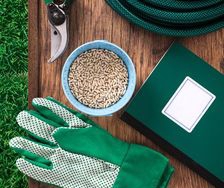
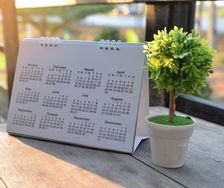
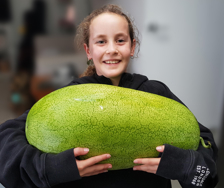
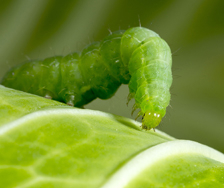
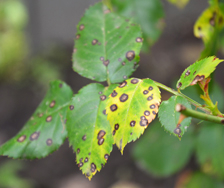
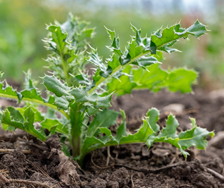
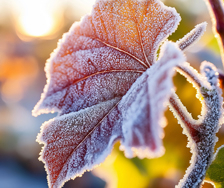
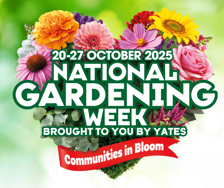
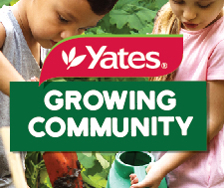




Share
Share this article on social media